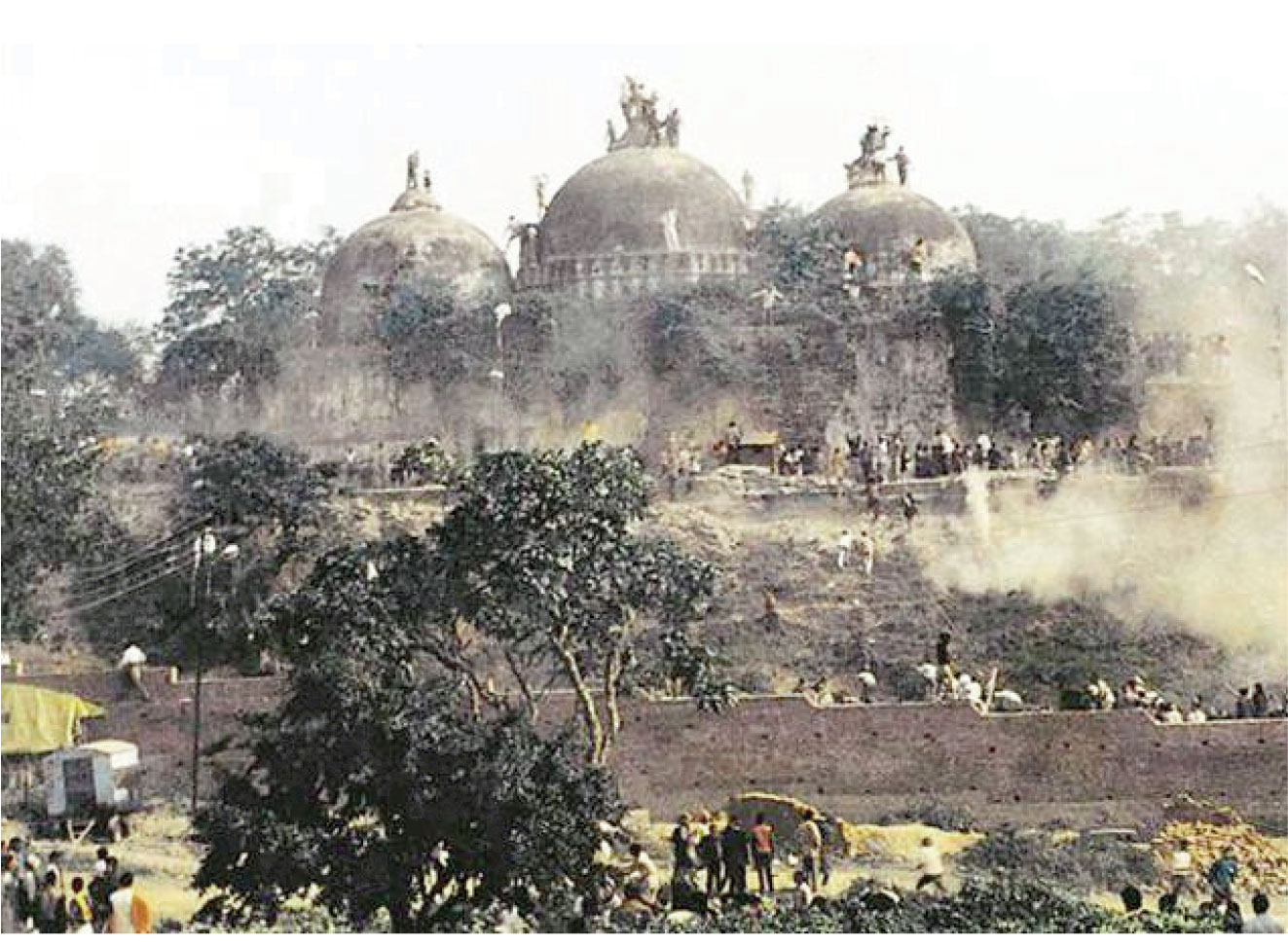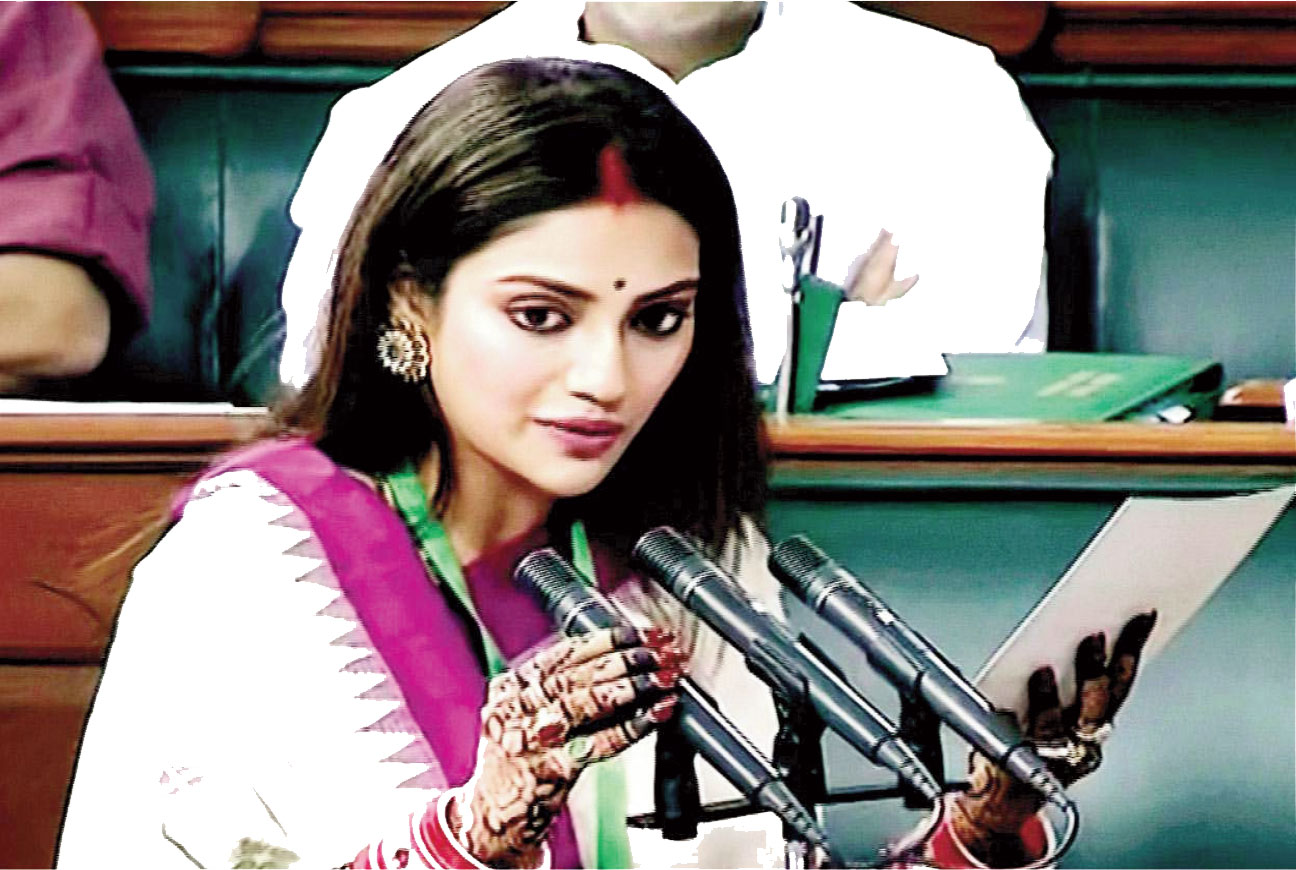Giving wings to dreams of
‘New India'
 Ayodhya land dispute
With the rich legacy of moral, spiritual and cultural values,
India, by and large, lives on dreams – poor person’s rich
dreams and power-puffed leaders’ and rich men’s
grande-infested dreams. These go on for ever, from
garibi hatao to $ 5 trillion economy which ignites a new hope for the
resurgence of the slow-moving economy.
Ayodhya land dispute
With the rich legacy of moral, spiritual and cultural values,
India, by and large, lives on dreams – poor person’s rich
dreams and power-puffed leaders’ and rich men’s
grande-infested dreams. These go on for ever, from
garibi hatao to $ 5 trillion economy which ignites a new hope for the
resurgence of the slow-moving economy.
These dreams, in a way, are as free as the air we breathe. The air is
polluted these days. So are our dreams, especially those induced,
encouraged or conjured by politicians.
Still, some dreams do not die with dreamers. They seem ageless as
they pass from one generation to another. The concept of Ram Rajya is
one such dream. Ask a villager in the Hindi belt what his views are on
the declining values and growing complexities in India and he will
bitterly remark, where is “Ram Rajya”.
Perhaps, its substitute is the much-discussed concept of Ram
Mandir, and rightly so. We all live in symbolism, built brick by brick.
Who cares for idealism and values as Adarsh Purush Rama we all
adore?
Perhaps, sublime worshipping structures too serve their purpose as
carriers of hope. And hope is a catalyst for any arduous march ahead.
In its historical context, the concept of Ram Rajya is rooted in equality,
justice, fair-play, freedom and equal opportunity for all without
exploitation or discrimination on grounds of caste, class or creed. This
dream is embedded in the Hindu psyche. And it is adopted in our
Constitution to build allinclusive New India.
I am recalling those
golden thoughts as we
await the apex court’s
verdict on Rama
birthplace Ayodhya’s
land dispute following
the demolition of the
Babri Masjid. I am not
going into the question
of rights or wrongs of
the demolition act.
Personally, I look at such
historical structures built
by “foreign forces” as a
reminder as to how and
where we went wrong.
Did it indicate our
weakness of character as
Hindus vis-à-vis
“invaders”, who
managed to rule over us
by their skills of divide
and rule? Have we learnt
right lessons from
history? I doubt it. Well,
Ram Rajya or no Ram
Rajya, our political
leaders invariably keep
themselves afloat in the
public esteem by
making all sorts of
promises.
An action-packed human
drama, the mythological stories
of the Ramayana revolve around
the virtuous, wise god-king,
Rama, who lives by high ideals
and rules his kingdom by the law
of dharma, ancient norms of
justice, fair-play, liberalism,
equality and righteousness.
I am recalling those golden
thoughts as we await the apex
court’s verdict on Rama
birthplace Ayodhya’s land
dispute following the demolition
of the Babri Masjid. I am not
going into the question of rights
or wrongs of the demolition act.
Personally, I look at such
historical structures built by
“foreign forces” as a reminder as
to how and where we went
wrong. Did it indicate our
weakness of character as Hindus
vis-à-vis “invaders”, who
managed to rule over us by their
skills of divide and rule? Have we
learnt right lessons from history?
I doubt it. Well, Ram Rajya or no
Ram Rajya, our political leaders
invariably keep themselves afloat
in the public esteem by making
all sorts of promises for those
good old golden days.
I must recall here Mahatma
Gandhi. He fully realized that
religion is a vital force in Indian
society. That is why he used
parables to convey the message of
right and wrong in daily life to
the people.
During the freedom struggle
Gandhi often referred to the need
for attainment of Ram Rajya. To
achieve that goal, he expounded
his theory of Trusteeship, under
which “the means of the capitalist
structure are utilized for
achieving social good. Thus, the
freedom to private disposition of
capital goes along with the
achievements of basic necessities
of the entire population”.
Those ideas of Gandhi are
matters of ethics, economic and
politics. Today’s is a different
setting and different norms, far
away from the concepts of
Trusteeship and ethics, even
though they are in tune with the
Indian phislosophy of
Vasudhaiva Kutumbakam (the
world is one family).
Independent India rulers have,
however, their own ideas of
statecraft. They did peddled
“Ram Rajya type dream to get
votes, but Gandhi’s dream
concept re-aims as elusive as
ever.
No regrets. Indian has to move
on fast on the modern path,
though “shadow boxing” in
crimes and violence goes on
amidst religious animosity
among
various communities, killings,
lynchings, rapes, agony and pain.
No wonder, Richard
Attenborough’s Gandhi looks
like a man from another world,
though we continue to pay
homage to him on October 2 at
the Gandhi Samadhi and discuss
and debate about him in
airconditioned comforts of
drawing rooms!
Again, no regrets. For, as a
nation we cannot march ahead
with bundles of regrets. This is why we have to keep our hopes
alive for Achhe Din.
Also, we continue to look for
role models for modern India.
The choice is wide open – to each
his own choice of freedom. For
the present, I wish to keep
politicians aside. For, I feel we
need persons in socio-religious
fields where we badly need voices
to change negative thinking at
the grassroots.
 Nusrat Jahan
One person who instantly
comes to my mind is Nusrat
Jahan. She is a young MP
belonging to Mamata Banerjee’s
TMC party. But there is nothing
politics in what she has done. She
has married a Jain businessman
and wears sindoor, mangalsutra
and bangles publicly. This has
prompted the clerics to dub her
“unIslamic” and issue the fatwa
against her for marrying a nonMuslim. Responding to the fatwa,
she has told the people not to
heed these “hardliner: who
“breed hatred and violence” in
Indian society.
Nusrat Jahan
One person who instantly
comes to my mind is Nusrat
Jahan. She is a young MP
belonging to Mamata Banerjee’s
TMC party. But there is nothing
politics in what she has done. She
has married a Jain businessman
and wears sindoor, mangalsutra
and bangles publicly. This has
prompted the clerics to dub her
“unIslamic” and issue the fatwa
against her for marrying a nonMuslim. Responding to the fatwa,
she has told the people not to
heed these “hardliner: who
“breed hatred and violence” in
Indian society.
I heartily support her. She
boldly asserted that “I represent
an inclusive India which is
beyond the barriers of caste,
creed and religion”.
One person who instantly
comes to my mind is
Nusrat Jahan. She is a
young MP belonging to
Mamata Banerjee’s TMC
party. But there is nothing
politics in what she has
done. She has married a
Jain businessman and
wears sindoor,
mangalsutra and bangles
publicly. This has
prompted the clerics to
dub her “unIslamic” and
issue the fatwa against
her for marrying a nonMuslim. Responding to
the fatwa, she has told
the people not to heed
these “hardliner: who
“breed hatred and
violence” in Indian
society.
A firm believer in Islam, she
says that she “respects all faiths”
and adds, “I still remain a Muslim
and none should comment on
what I choose to wear. Faith is
beyond attire and is more about believing and practising the
invaluable doctrines of all
religions”.
She is right. In India’s
communal divide, what is
regrettable is the reluctance of
Muslims to join the national
mainstream.
The Hindu society broadly
favours assimilation and
syneratic harmony Still, social
and religious tensions have
surfaced for a variety of reasons. I
am sorry discussing these issues
beyond the scope of this article.
Maybe, I shall do it at a future
date. We should all look within
through the prism of secular and
liberal India.
I believe that the
emphasis today has
to be on synthesis
and assimilation
without loss of
religious identity. At
the same time, we
have to ensure
evolution of new
identities of Indian
nationhood.
We have also to examine why
sections of Hindus nurse a feeling
of denial on the basis of their
numerical strength. We also must
examine why the Muslim
mindset, controlled by clerics,
continues to nurse negativism
and seems reluctant to
reasonably adjust to new
situations and seize opportunities
to improve their lot.
I believe that the emphasis
today has to be on synthesis and
assimilation without loss of
religious identity. At the same
time, we have to ensure evolution
of new identities of Indian
nationhood.
It is in this light that I admire
Nusrat Jahan Jain as a new role
model for all-inclusive India.




